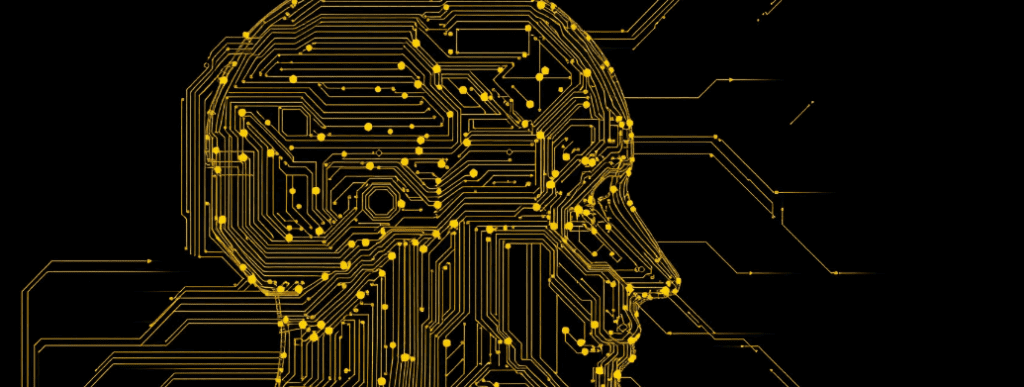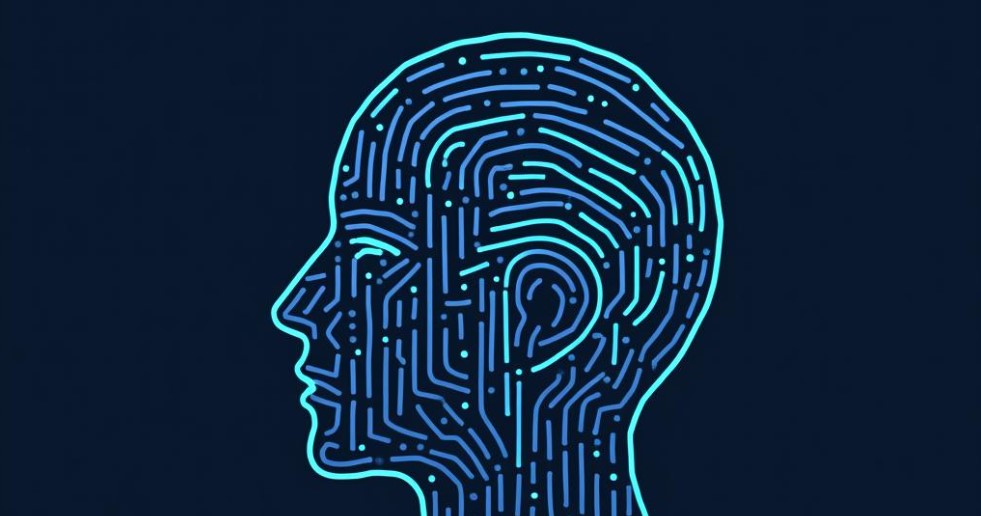
Adversarial attacks are a growing concern. These sneaky, often subtle attacks manipulate AI models to produce erroneous outputs or behave unexpectedly. Patronus AI steps in as a solution, helping organizations build robust AI systems resistant to these threats.
This guide will walk through how adversarial attacks work, how Patronus AI combats them, and best practices for fortifying AI models.
Understanding Adversarial Attacks in AI
What Are Adversarial Attacks?
Adversarial attacks are designed to trick machine learning models. By slightly altering input data—like tweaking pixels in an image—hackers can lead AI systems to misinterpret the input entirely. This might seem harmless, but it can lead to serious issues, especially in high-stakes environments like healthcare, finance, or autonomous driving.
For example, a simple change to an image can make an AI classify a stop sign as a yield sign, creating dangerous situations on the road. These small but intentional manipulations exploit vulnerabilities in the AI’s training, making them a significant threat to the AI’s reliability.
Types of Adversarial Attacks
Adversarial attacks fall into different categories, each with unique approaches and objectives. The most common types include:
- Evasion Attacks: These attacks manipulate input data to “evade” the AI’s detection mechanisms. They’re common in image recognition, where minor pixel adjustments can alter the model’s understanding.
- Poisoning Attacks: Here, malicious data is injected during the training phase, poisoning the model’s learning process and making it prone to errors.
- Inference Attacks: These attacks exploit the model’s knowledge to infer sensitive data. Hackers can use them to uncover private data used in training, leading to privacy breaches.
Understanding these types of attacks helps developers anticipate potential vulnerabilities in their models.
Why Are AI Models Vulnerable?
AI models, especially deep learning models, are sensitive to small input variations. This vulnerability stems from the model’s reliance on patterns learned during training. When faced with slightly modified inputs, the AI’s usual pattern recognition can be thrown off course, often resulting in highly inaccurate outputs. Adversarial attacks exploit this by creating inputs that fit known patterns but subtly break the model’s logic, revealing weaknesses in its design.
How Patronus AI Builds Robustness Against Attacks

Detecting Potential Threats Early
Patronus AI’s first line of defense is its early detection mechanisms. By constantly monitoring the data flowing through the model, Patronus AI identifies potential threats before they can cause harm. This proactive approach includes identifying unusual input patterns, which are often a red flag for adversarial attacks.
For example, in image recognition systems, Patronus AI can recognize when a suspicious input contains unnatural pixel patterns and alert the system to avoid processing it. This early detection layer helps prevent evasion and poisoning attacks from slipping past unnoticed.
Hardening Models with Defensive Training
One of the core strategies Patronus AI uses is defensive training. By exposing models to various adversarial samples during training, the system becomes more resistant to similar manipulations in the future. Defensive training not only builds the model’s familiarity with atypical data patterns but also enhances its resilience against future attacks.
Imagine a security camera system trained to identify people in low-light conditions. Defensive training would involve adding adversarial examples—like blurred or pixel-altered images—to the model’s training set, helping it recognize people even in these challenging scenarios.
Incorporating Regularization Techniques
To enhance robustness, Patronus AI employs regularization techniques in the training process. These techniques reduce the model’s sensitivity to small input changes, preventing adversarial attacks from causing substantial errors. By slightly modifying the model’s learning structure, regularization creates a buffer against attack-based distortions.
Dropout and data augmentation are two key regularization strategies used. Dropout randomly disables certain neurons during training, helping the model generalize better, while data augmentation introduces varied data to train the model on diverse scenarios. This makes it harder for attackers to predict how small changes will impact model outputs.
Best Practices for Fortifying AI Models with Patronus AI
Monitoring and Logging for Suspicious Activity
Monitoring input data in real time is crucial. Patronus AI enables extensive logging and tracking of data patterns, making it easy to spot abnormalities that could indicate an attack. By keeping a close eye on data, developers can gain insights into how adversarial examples differ from regular data and use this information to strengthen the model further.
Moreover, logging provides a record of past adversarial attempts, allowing the team to learn and adapt to emerging threats.
Leveraging Ensemble Models for Defense

Combining Multiple Models for Better Accuracy
One effective strategy against adversarial attacks is ensemble modeling—combining several models to work together. Patronus AI allows organizations to layer different models so that even if one model is tricked, others can “vote” on the correct answer, significantly lowering the risk of incorrect outputs due to adversarial interference.
For instance, in a facial recognition system, using multiple models that have each been trained on different datasets or adversarial techniques can make the system more resilient. If an attack affects one model, the other models can balance the output, enhancing the system’s reliability.
Diversity in Model Architectures
Using diverse model architectures within an ensemble adds another layer of protection. Different architectures interpret data in slightly different ways, making it more challenging for an adversary to craft an input that disrupts all models simultaneously. Patronus AI supports integrating various architectures to maximize robustness, such as combining convolutional neural networks (CNNs) with recurrent neural networks (RNNs) for tasks involving both image and sequence data.
This strategy creates a safety net by reducing the chance that a single adversarial input could uniformly disrupt all model components.
Using Adversarial Example Generation for Training
Creating Synthetic Attacks to Build Resilience
A significant part of Patronus AI’s approach involves adversarial example generation during training. By artificially creating adversarial samples, developers can expose models to a variety of attack types, preparing them for real-world scenarios. This process, known as adversarial training, helps AI learn how to identify and resist manipulated data.
For instance, Patronus AI generates synthetic attacks on images by slightly altering pixel values. By learning from these tampered examples, the model becomes better equipped to recognize similar tactics in actual deployments. This proactive training approach allows models to distinguish authentic inputs from adversarial ones more effectively.
Testing the Model with Gradient-Based Attack Simulations
Another approach involves gradient-based attacks, where input data is altered by calculating gradients in the model to maximize error. Patronus AI can simulate these attacks, helping developers test how vulnerable the model might be. By understanding which areas are most susceptible to tampering, organizations can further refine the model and make it less prone to such targeted disruptions.
These simulated attacks provide critical insights, allowing developers to adjust the model’s design before adversaries exploit any vulnerabilities.
Enhancing Model Transparency and Interpretability

Using Explainable AI (XAI) Techniques
A key to defending against adversarial attacks is understanding how a model reaches its conclusions. Explainable AI (XAI) techniques make the decision-making process of AI models more transparent. With Patronus AI, organizations can track the decision paths of models, identifying any inconsistencies or unexpected behaviors that could signal an adversarial influence.
For example, heatmaps showing the areas of an image that influenced the model’s output can highlight unusual patterns, revealing potential adversarial manipulations. XAI tools thus add another layer of defense by making it easier to detect and address anomalies that adversaries may exploit.
Building Trust through Model Validation
Regular model validation helps detect weak points that adversarial attacks might target. Patronus AI supports validation techniques that cross-check model decisions with ground truth data, identifying where and why discrepancies arise. By continuously validating the model, teams can ensure it’s performing as expected, strengthening trust in the model’s reliability.
Routine validation also allows developers to refine the model, making adjustments based on new findings, and safeguarding against emerging adversarial tactics.
Prioritizing Security Throughout the AI Lifecycle
Developing Secure AI from the Start
AI security needs to be integrated right from the design phase. Patronus AI encourages security-first development practices, ensuring that adversarial resistance isn’t an afterthought. This means embedding security checks, adversarial training, and resilience testing from the outset.
Secure AI design considers not only the model’s immediate functionality but also how it may respond to unusual inputs. Patronus AI supports these proactive measures, making it easier to develop models that stand strong against potential adversarial threats right from day one.
Continuous Model Monitoring Post-Deployment
Defending against adversarial attacks doesn’t end with training. Once deployed, models should be continuously monitored for abnormal behaviors. Patronus AI enables ongoing surveillance of model interactions, flagging any unusual patterns or unexpected predictions that could indicate an attack.
In addition, regular updates and model recalibration based on recent data help keep defenses current. By maintaining active oversight, organizations can detect and respond to adversarial threats as they arise, ensuring long-term robustness.
By leveraging advanced tools like Patronus AI, teams can stay one step ahead of adversarial threats, securing their AI systems in a constantly evolving digital landscape. Robust, resilient models ensure AI remains a trustworthy asset across industries.
Educating Teams on Adversarial Threat Awareness

Training Developers and Users Alike
For an AI system to be truly robust, all team members—developers, analysts, and even end-users—need to understand the basics of adversarial threats. Patronus AI supports awareness training, educating teams on how adversarial attacks operate and what indicators to watch for. This knowledge empowers employees to recognize and report unusual model behaviors that could signify an attack.
For instance, developers learn how to spot unusual model outputs and diagnose them, while users can be informed of what normal vs. suspicious behavior might look like. This broad awareness creates a security-focused culture, where everyone actively contributes to the system’s resilience.
Creating Incident Response Protocols
In the event of a detected adversarial attack, quick, coordinated action is essential. Patronus AI recommends having incident response protocols in place, which outline clear steps for identifying, containing, and addressing attacks. This includes setting up alerts, conducting real-time diagnostics, and even temporarily rolling back the model to a previous stable state if needed.
Prepared response protocols ensure that teams can respond effectively to threats, minimizing downtime and protecting the integrity of data and results. A streamlined response process not only mitigates damage but also reinforces trust in the AI system’s robustness.
Strengthening Data Integrity to Block Poisoning Attacks
Safeguarding the Training Data Pipeline
To counter poisoning attacks, which involve manipulating training data to mislead models, Patronus AI emphasizes data integrity checks at every stage of the data pipeline. This includes using tools that validate data sources, detect anomalies, and flag any inconsistencies before data is fed into the model. By ensuring the training data remains accurate and untampered, organizations can prevent adversaries from “poisoning” the model’s learning process.
Data integrity checks can include automated scans for unexpected patterns, as well as manual reviews for critical data inputs. This process minimizes the chances of adversarial contamination and helps keep the model’s learning environment secure.
Enforcing Access Controls and Data Encryption
Controlling who has access to training data and using encryption can significantly reduce the risk of data tampering. Patronus AI supports access control measures that restrict data access to authorized users only, ensuring that sensitive training data isn’t exposed to unauthorized manipulation.
Encryption adds an additional layer of protection, keeping data secure both in storage and during transmission. By prioritizing data security through controlled access and encryption, organizations can block unauthorized changes that could compromise model integrity.
Staying Ahead of Threats with Continuous Research

Keeping Up with Evolving Adversarial Techniques
Adversarial attacks evolve quickly, with new techniques emerging frequently. Patronus AI invests in continuous research to stay ahead of these changes, equipping teams with the latest defenses against evolving threats. By studying new attack types and regularly updating their toolkit, Patronus AI ensures that models remain protected against the latest methods used by adversaries.
Research teams at Patronus AI collaborate with the wider AI security community, sharing findings and gaining insights into the newest adversarial strategies. This commitment to research means that organizations using Patronus AI benefit from up-to-date knowledge and defense capabilities, keeping their systems resilient against the latest threats.
Regular Model Audits and Resilience Testing
Frequent model audits and resilience testing help confirm that defenses remain effective over time. Patronus AI facilitates routine model audits, where models are tested against the latest adversarial tactics to verify their strength. This process identifies any emerging vulnerabilities, allowing for adjustments and fine-tuning as needed.
By regularly testing models against new and varied adversarial techniques, teams can continuously improve the system’s resistance, maintaining a high level of security and reliability.
In a world where adversarial attacks on AI systems are becoming increasingly sophisticated, Patronus AI offers an indispensable layer of protection. Through a combination of defensive training, real-time monitoring, data integrity checks, and continual research, Patronus AI helps organizations build robust AI systems that withstand a variety of attack vectors. As AI’s role expands across industries, these fortified models provide a foundation of security, ensuring reliable performance even in the face of complex adversarial threats.
With Patronus AI, businesses can move forward confidently, knowing that their AI systems are built to withstand even the most advanced adversarial challenges.
FAQs
What are some methods Patronus AI uses to make AI models more resilient?
Patronus AI enhances model resilience through defensive training, regularization techniques, and ensemble modeling. Defensive training involves exposing models to adversarial examples during training to help them learn to identify and resist such inputs. Regularization techniques, like dropout and data augmentation, reduce the model’s sensitivity to minor changes. Additionally, ensemble modeling combines multiple models to make the system more robust, so that if one model is compromised, others can compensate.
How does Patronus AI prevent poisoning attacks?
To prevent poisoning attacks, Patronus AI emphasizes data integrity throughout the training process. This includes implementing data validation checks, using encryption for data security, and restricting data access to authorized users only. These practices help ensure that the training data remains untampered, protecting the model from being misled by maliciously altered information.
What is defensive training, and why is it important?
Defensive training is a technique that involves training models with adversarial examples—inputs that have been intentionally altered to test the model’s robustness. By exposing the AI to these manipulative inputs, it learns to identify and resist similar attacks in the future. Defensive training is crucial because it helps models build a resistance to real-world adversarial attacks, ultimately making them more reliable and secure.
How does ensemble modeling enhance model security?
Ensemble modeling combines several AI models to form a collective defense. Each model in the ensemble may be trained on different datasets or use different architectures, which makes it harder for adversaries to create an attack that affects all models simultaneously. This approach acts as a failsafe; if one model is tricked, the others can provide a more accurate prediction, increasing the system’s overall robustness.
Why is explainable AI (XAI) important for defense against adversarial attacks?
Explainable AI (XAI) improves transparency by showing how and why a model reaches its conclusions. This visibility is essential for identifying unusual behaviors or patterns that may indicate an adversarial attack. By understanding the decision-making process, developers can detect potential vulnerabilities and adjust the model’s logic, making it harder for adversaries to exploit weaknesses.
Does Patronus AI offer support for continuous research and model updates?
Yes, Patronus AI is committed to staying ahead of evolving adversarial tactics by investing in continuous research. The Patronus AI team works closely with the AI security community to understand emerging threats and update their defense mechanisms accordingly. Regular model audits and resilience testing help keep AI systems secure against new attack vectors, ensuring long-term protection.
Can Patronus AI help with real-time monitoring of AI models?
Yes, Patronus AI provides tools for real-time monitoring of AI models to detect and flag suspicious activity immediately. This feature allows organizations to track data flow and model responses continuously, helping to identify any irregularities that could indicate an adversarial attack. Real-time monitoring is crucial for quickly containing potential threats and minimizing the impact on the AI system’s performance.
What are poisoning attacks, and how do they affect AI models?
Poisoning attacks involve injecting malicious or manipulated data into the training set to alter the model’s learning process. These attacks aim to “poison” the AI’s understanding, causing it to make mistakes during prediction. For instance, in a financial model, poisoning attacks might lead to biased predictions that favor certain patterns. By contaminating the training data, adversaries can make the AI system unreliable or vulnerable to further manipulation.
How does Patronus AI implement data integrity checks?
Patronus AI uses various data integrity checks throughout the data pipeline to ensure that the training and input data are accurate and untampered. This includes validating data sources, running anomaly detection algorithms, and logging data changes for auditability. These measures help block adversarial attempts to introduce harmful data into the system, preserving the model’s reliability and accuracy.
What role does access control play in preventing adversarial attacks?
Access control is vital in preventing unauthorized individuals from tampering with training data or model parameters. Patronus AI enforces strict access controls, allowing only authorized users to interact with critical parts of the AI system. By limiting access, Patronus AI reduces the risk of insider threats or accidental exposure to adversarial manipulation, making the model more secure overall.
Why is regular model auditing necessary for AI security?
Regular model auditing is essential because adversarial techniques evolve rapidly. By conducting frequent audits, Patronus AI helps identify emerging vulnerabilities and assess the model’s resilience against new adversarial strategies. During an audit, models are tested with the latest known attack methods to evaluate their defenses. This process ensures that the AI system remains robust and can adapt to new threats over time.
How does adversarial example generation improve model resilience?
Adversarial example generation involves creating synthetic samples that simulate potential attack methods. By exposing models to these examples during training, Patronus AI helps them learn to detect and counteract adversarial tactics. This proactive exposure makes the AI more resilient, as it becomes familiar with the kinds of manipulations adversaries might use and learns to respond accurately.
What makes Patronus AI different from other AI security solutions?
Patronus AI stands out because it combines multiple defense layers—such as early detection, defensive training, ensemble modeling, and explainable AI techniques—in one integrated solution. Its approach emphasizes both proactive and reactive defenses, ensuring AI models are resistant to a wide range of attack vectors. Additionally, Patronus AI prioritizes continuous research and development, keeping its clients protected against the latest threats in adversarial AI.
How does Patronus AI assist in incident response for adversarial attacks?
Patronus AI supports organizations with incident response protocols specifically tailored for adversarial attacks. When a suspicious pattern is detected, Patronus AI can trigger alerts and guide the team through containment steps, such as isolating the affected model component or switching to a backup. These protocols help teams react quickly, minimizing the impact of an attack and maintaining operational continuity.
Can Patronus AI work with different types of machine learning models?
Yes, Patronus AI is compatible with a variety of machine learning models, including deep learning, reinforcement learning, and traditional supervised learning models. It provides flexible solutions that can be tailored to the specific requirements and architectures of each model, ensuring a high level of security across diverse AI applications. This adaptability allows organizations to secure everything from image recognition systems to predictive analytics models.
How can explainable AI tools in Patronus AI improve regulatory compliance?
Explainable AI (XAI) tools within Patronus AI offer transparency in model decision-making, which is crucial for meeting regulatory requirements. In sectors like finance and healthcare, regulators often require that AI decisions be understandable and justifiable. By providing insight into how models reach their conclusions, Patronus AI enables organizations to demonstrate compliance and avoid legal risks associated with “black box” AI systems.
Does Patronus AI require specialized knowledge to implement?
While some level of AI understanding is helpful, Patronus AI is designed to be user-friendly and accessible to teams with varying levels of technical expertise. The platform includes guided setups, automated monitoring, and user-friendly dashboards, making it easy to implement and manage. Patronus AI’s support team is also available to assist with integration and troubleshooting, ensuring that organizations can adopt adversarial defenses with confidence.
Resources
Tools and Frameworks for Adversarial Defense
- Adversarial Robustness Toolbox (ART)
Developed by IBM, ART is an open-source library that provides tools for generating adversarial examples and implementing defense techniques. It supports various machine learning frameworks, including TensorFlow and PyTorch.
Link: ART on GitHub - CleverHans
CleverHans is a Python library created by the research community for generating adversarial examples and testing model robustness. It’s widely used in academia and industry for adversarial research and model hardening.
Link: CleverHans on GitHub - Foolbox
Foolbox is an easy-to-use library that provides a range of attack algorithms and robustness tests, compatible with many deep learning frameworks. It’s designed to help researchers and developers test model resilience.
Link: Foolbox on GitHub
Industry Standards and Guidelines
- NIST: Adversarial Machine Learning Guidelines
The National Institute of Standards and Technology (NIST) provides guidelines on securing AI models against adversarial attacks, offering best practices for both government and industry applications.
Link: NIST AI Security Framework - Partnership on AI: AI Security and Safety Principles
The Partnership on AI offers resources and principles focused on the ethical use of AI, including robust security practices to prevent adversarial misuse. Their guidelines help organizations approach AI development responsibly.
Link: Partnership on AI





